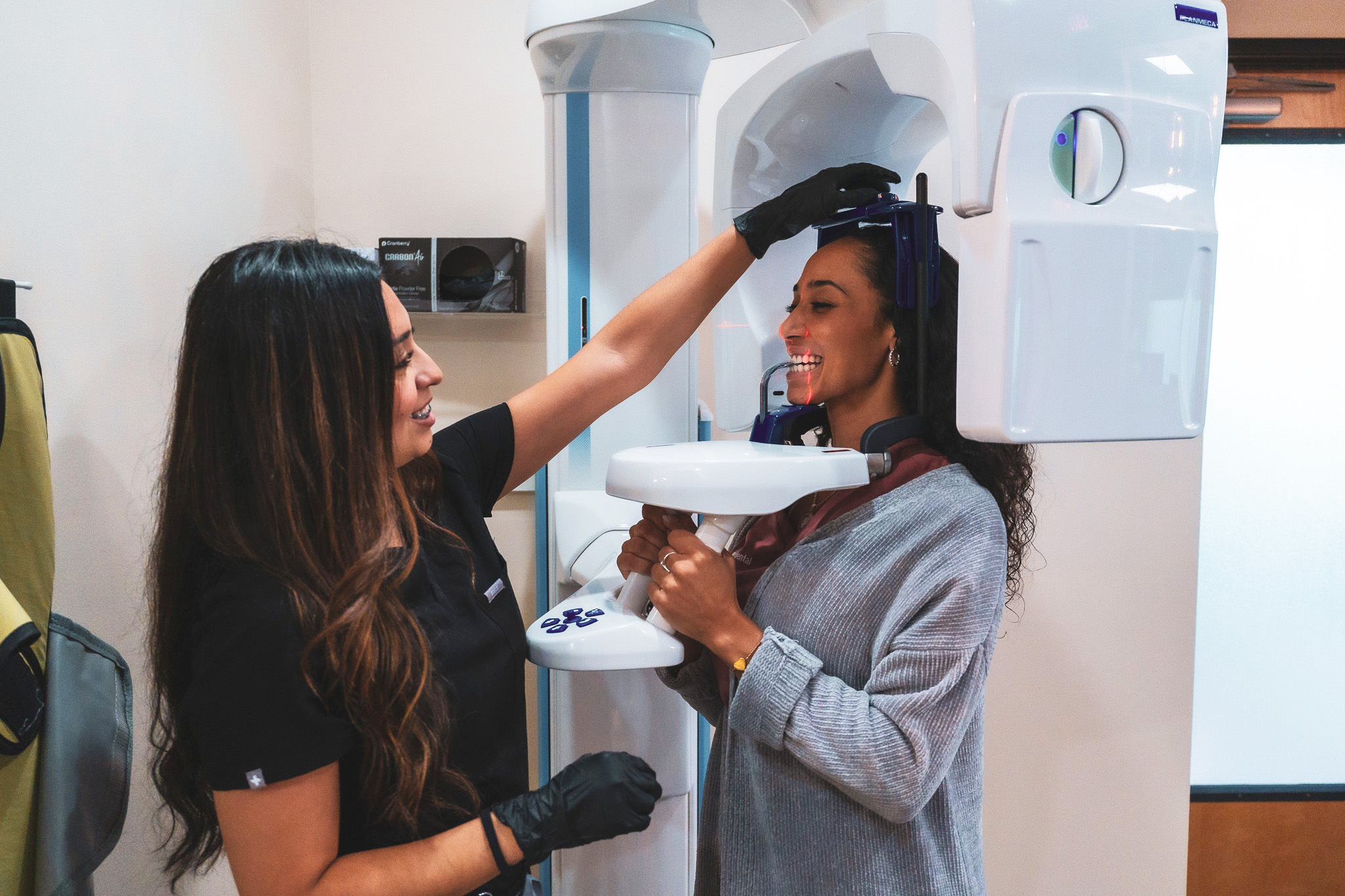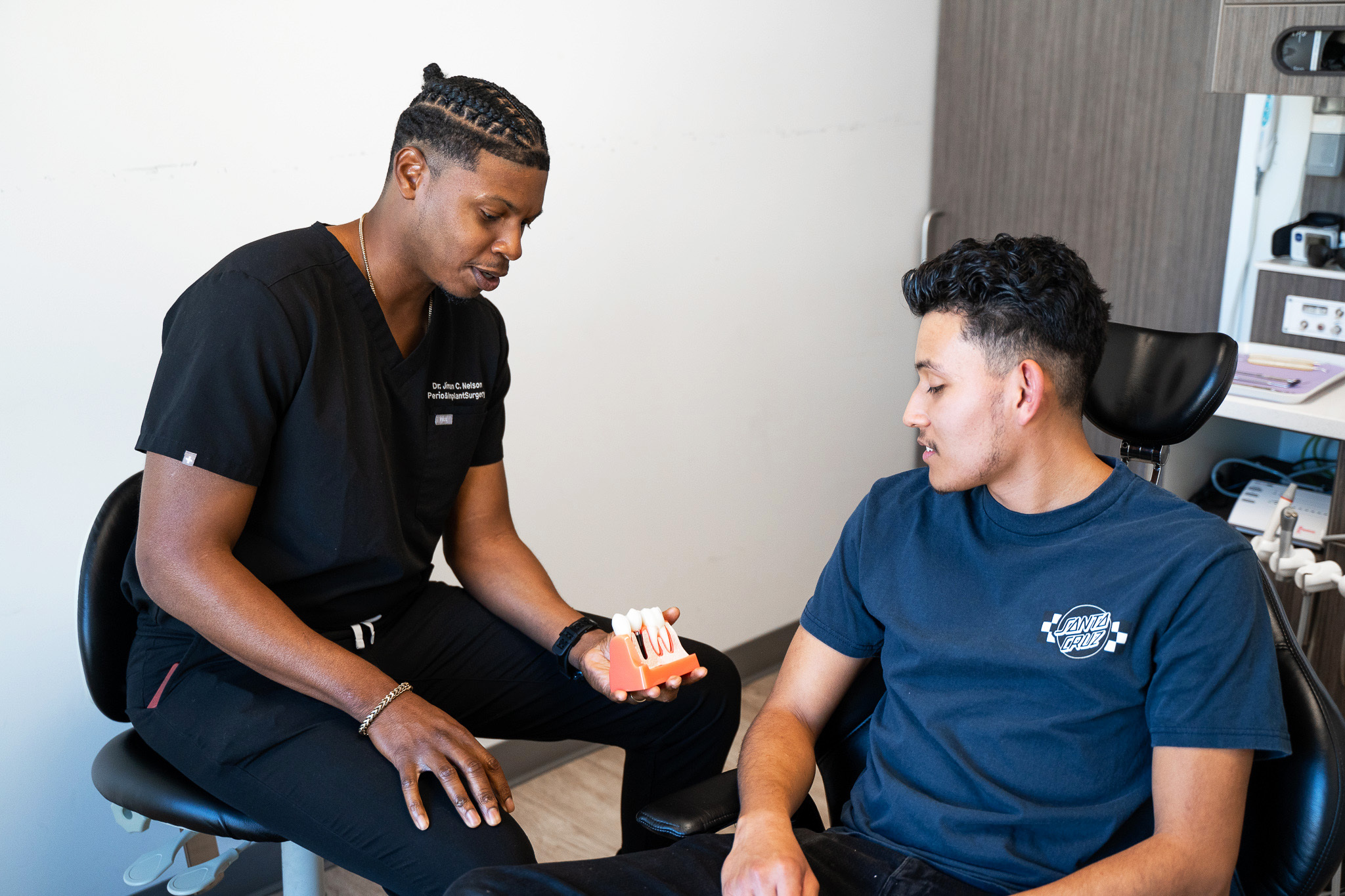Children are expected to lose their baby teeth; however, once your permanent teeth arrive, tooth loss is a serious issue that could cause oral health issues. Common causes of tooth loss include the following:
Suppose you have a cavity and have to have a tooth extraction because of the damage to the tooth and its roots. Since a tooth’s roots are embedded in the alveolar bone — better known as the jaw bone — tooth extraction or loss affects the shape of your gums, jawbone, and face. Tooth loss also causes bone loss.
In addition to affecting your appearance, tooth loss can affect your speech and diet. You need your teeth to help create sounds when speaking, and you need your teeth to help tear and chew food, so you can eat without choking. That’s why investing in cosmetic dentistry procedures is crucial to replace your missing tooth. Your remaining teeth may move unless you replace the missing tooth with dental implants or bridges. Tooth and bone loss also increases the risk of gum disease and additional bone loss.
If you’ve lost a tooth or your dentist recommends tooth extraction, it’s crucial to understand the difference between porcelain veneers, bridges, and dental implants, as well as the role pre-existing ridge augmentation plays when you opt for implants.
![]()
Bone loss happens when a patient has periodontal disease or other medical conditions that affect the jawbone. A ridge augmentation procedure is performed after tooth extraction or loss. Ridge augmentation helps reconstruct the gums and the jawline. Ridge augmentation strengthens the remaining bone and replaces missing bone.
The alveolar margins, known as the alveolar ridge, are two ridges that contain the alveoli of the tooth. The alveolus works like a socket and holds the tooth root.
When you lose a tooth, the alveolar remains open. It’s filled with natural tissues. The alveoli can break and may not heal when you lose a tooth or when the tooth is extracted. To get an implant, you need a strong and healthy bone that can support the implant. A ridge augmentation restores the alveolar bone’s strength and ensures enough bone to support a dental implant.
Dentists and periodontists perform ridge augmentations.

Anyone with permanent teeth that have lost or had a tooth extracted is an ideal candidate for ridge augmentation. Lack of bone or low bone density are reasons for ridge augmentation.
Ridge augmentation isn’t performed on children. However, children born with a cleft palate and lip may eventually need a bone graft.
If you think you may need ridge augmentation, you should discuss your medical history, risks, dental implant costs, and the benefits of the procedure with your dentist or periodontist to confirm the procedure is right for you.
If you don’t have a strong enough bone, your jawbone won’t be able to support dental implants. Ridge augmentation replaces and strengthens the bone to support the dental implants required to replace your missing teeth. Bone density is crucial for osseointegration, a process in which the dental implants bond and adhere to the jawbone successfully. The implant acts like the tooth’s root and needs bone density to strengthen the jawbone.
Ridge augmentation also restores your face shape. Getting dental implants after your ridge augmentation helps prevent further bone loss, helps prevent gum disease and further bone loss, enables you to speak clearly, and ensures you can chew your food.
The procedure is done by fixing a bone graft and tissue in the space that is left after losing or extracting a tooth. In most cases, if the tooth is extracted, a dentist near you will perform ridge augmentation to avoid bone loss.
When dentists extract a tooth, they try to preserve the fragile bone. They will also take steps to ensure that the socket doesn’t collapse. Bone replacement material is added into the cavity, known as ridge and socket preservation, through bone grafting.
The procedure should be done immediately after tooth extraction. This will preserve the bone so that it can support future implants.
Once a tooth is extracted, the supporting bone will start to melt. If ridge augmentation is done immediately after tooth removal, this will prevent bone loss.
An emergency dentist can place grafting material in the alveolus and stitch the gums carefully for better healing. The bone and tissue graft material grows in the alveolus and fills the space to improve bone density so that the bone can support dental implants.
You will be under anesthesia during your ridge augmentation procedure. Many patients opt to receive local anesthesia at their dentist’s office. Patients are awake when they receive local anesthesia. Anesthesia prevents pain, but patients know what happens during the procedure.
Some patients opt for IV sedation instead of local anesthesia. Some patients receiving IV sedation anesthesia sleep through the procedure, while others may stay awake. Those who are awake are more relaxed and less aware of the procedure. IV sedation is a good option for those with dental anxiety.
When a tooth is extracted with care, it is important to leave the socket bone in place. This can clean and debride the cavity where the tooth was. The dentist will insert a prepared cadaver bone graft into the cavity. This will help keep the socket intact with a small collagen plug where the socket sutures it. The collagen plug will fall after a few days, and a new alveolar bone will replace the plug and help preserve the ridge.
You will go for a checkup four months after grafting; the dentist will check to see if you have enough bone, and if it’s strong enough to support implants, you’re ready for the next step in the implant process.
The ridge augmentation procedure takes approximately 60 minutes, although it could take up to two hours. Factors affecting the time needed to complete the procedure include the location of bone loss and the amount of bone loss your dentist is treating.
Houston residents can trust URBN Dental with their ridge augmentation and oral health care needs. Our dental care professionals deliver personalized care and consider your needs and concerns when recommending appropriate treatment. If you’ve lost a tooth that can’t be replaced in its socket or need a tooth extraction, we’ll explain the differences between porcelain veneers, bridges, and dental implants, and the long-term oral health risks and benefits. If you’re investing in a smile makeover, we’ll explain your options for achieving those goals.
URBN Dental strives to ensure you receive expert dental care that prevents oral health problems, addresses existing issues, and gives you a smile you love.
You must rest and avoid rigorous physical activity while you recover from your ridge augmentation procedure. It’s common for people to experience some bruising, inflammation, and swelling after their ridge augmentation. Symptoms typically last seven to 14 days.
Your dental insurance may cover your ridge augmentation treatments if the ridge augmentation is a medical necessity. Since bone loss can significantly impact your health, your dentist should be able to provide the medical information required to prove your ridge augmentation is a necessary medical procedure.
URBN Dental accepts PPO dental insurance from most major insurance companies. You can contact our office to confirm we accept your insurance and whether your insurance will cover your ridge augmentation.
URBN Dental accepts payment with CareCredit. Individuals without insurance can apply to CareCredit to pay for their dental procedures, and the repayment terms can be set to ensure they can afford the treatment they need. URBN Dental will also work with individuals without insurance to create payment plans to cover their dental procedures.
About Tooth Loss. (2024).
Santos-Longhurst, A. (2018). Tooth Anatomy.
Tooth loss in older adults. (2024).
Houston | Katy | Montrose | West University Place | Greater Third Ward | Greater East End | North East Houston | Houston Heights | Central Northwest | Fairbanks | Acres Home | East Houston | Southeast Houston | Central Southwest | Fort Bend Houston | Brays Oaks | Meyerland Area | Sharpstown | Alief | Westchase | Memorial | Northwest Houston | Katyland | Whispering Lakes | Pine Lakes | Woodcreek Reserve
No Insurance? No problem.
© Copyright 2025 | Designed & SEO Optimized by The Doctors Marketing
Disclaimer: URBN Dental uses restorative materials such as Admira Fusion® by VOCO, which are free of BPA and Bis-GMA, and are not known to degrade into microplastics under normal oral conditions. While marketed as biocompatible and free of traditional plastic monomers, no dental material is guaranteed to be completely risk-free for all patients. This information is provided for educational purposes and does not constitute medical or regulatory advice.

Discover your perfect smile with a FREE Invisalign assessment.

Receive a complimentary 3D scan ($300 value) when you proceed with implant care.

Speak with our experts about your smile goals from the comfort of your home.
Discuss your smile goals with our experts—choose an in-office visit or a convenient 15-minute phone consult.

Quick, affordable care when you need it most.

Have questions about implants? Get personalized guidance in a brief phone call.